
People worry about toxic chemicals in disposable plates. I used to feel the same way until I found a safer choice.
The healthiest paper plates are non-toxic, food-safe, durable, and compostable. Bamboo fiber plates meet these standards best.
Not all plates are created equal. Some can harm health or pollute the planet. Let’s find out what really makes a paper plate healthy.
What Makes a Paper Plate Healthy?
Many people choose paper plates to avoid plastic. But not all paper plates are safe.
Healthy paper plates should be non-toxic, food-safe, and eco-friendly. Avoid plates with plastic or chemical coatings.
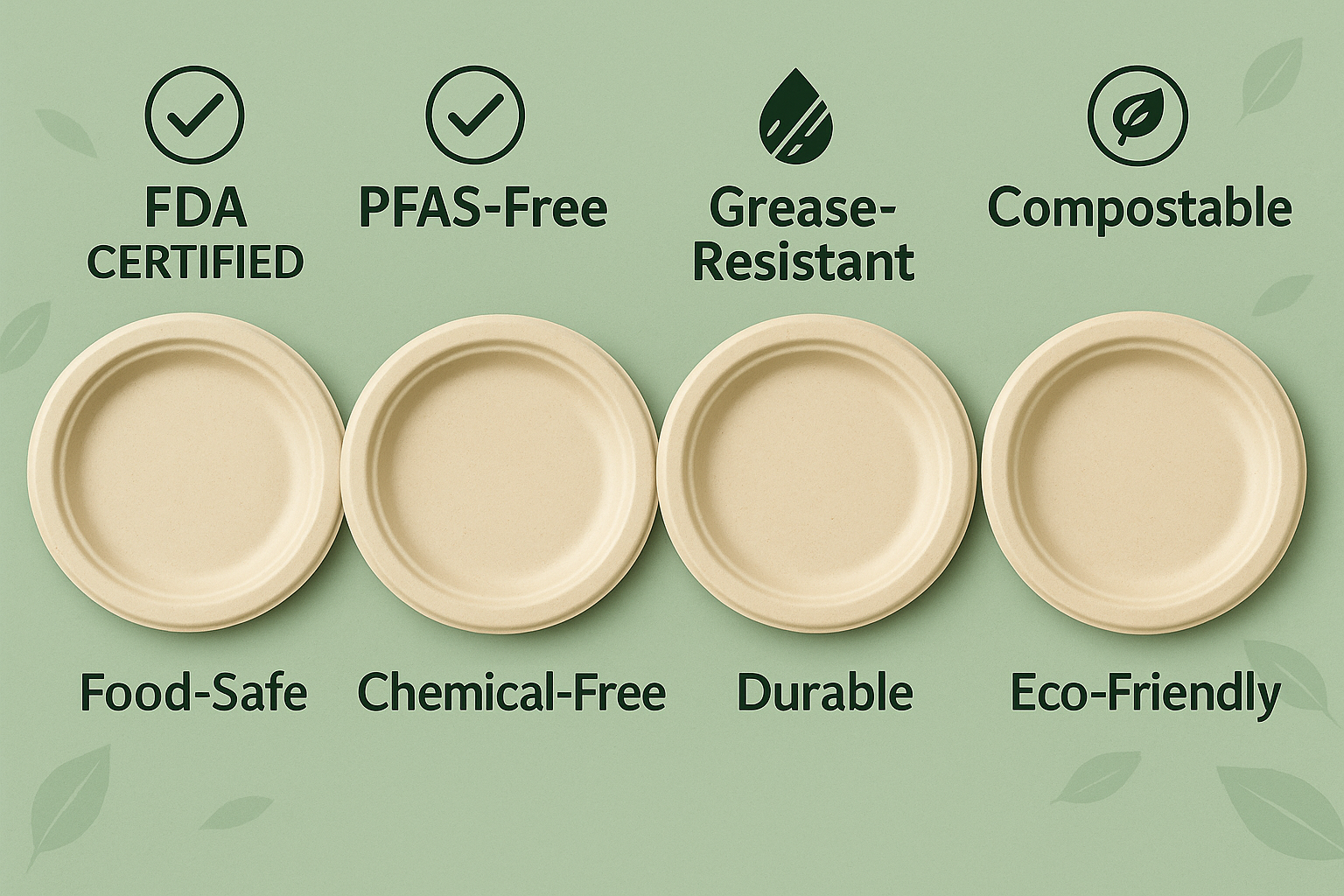
When I first started sourcing disposable tableware, I thought all paper plates were more or less the same. I was wrong. Some paper plates contain harmful chemicals like PFAS, BPA, or bleach. These substances can enter food, especially when plates are hot or oily.
Key Health Criteria for Disposable Plates
| Criteria | Importance | Notes |
|---|---|---|
| Food-Safe Certifications | Required for direct contact with food | Look for FDA, LFGB, or equivalent |
| Chemical-Free | No BPA, PFAS, bleach, wax, or plastic coatings | These can leach into food and harm health |
| Durable and Functional | Should resist grease, water, and heat | Must handle various food types without falling apart |
| Biodegradable | Breaks down naturally without microplastics | Supports both human and environmental health |
Plates must also resist heat and grease. Many people microwave their food on paper plates, which increases the risk of chemical leaching. So using certified, chemical-free options is essential. Lastly, a healthy plate should not just be safe for us—it should also be safe for the planet.
Why Are Bamboo Fiber Paper Plates the Healthiest Choice?
Most plates solve only part of the problem. Bamboo fiber solves almost all.
Bamboo fiber plates are non-toxic, durable, and compostable. They are safe for food and kind to the environment.
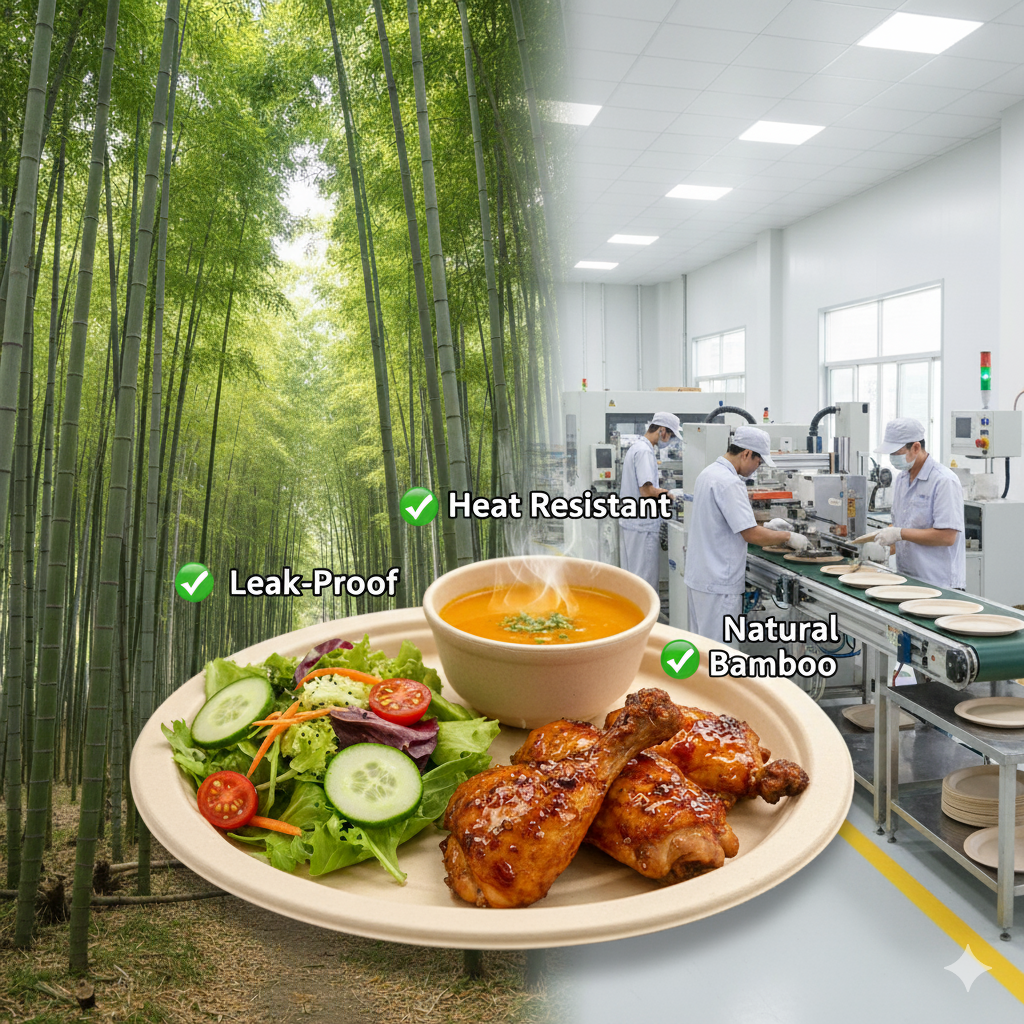
I switched to bamboo fiber plates after seeing how well they performed during a catering event. Unlike some paper or bagasse plates, they didn’t bend, leak, or get soggy. They handled soups, greasy BBQ, and even freezer storage with no issues.
Why Bamboo Fiber Outperforms Other Materials
| Feature | Bamboo Fiber Plates | Regular Paper Plates | Bagasse Plates |
|---|---|---|---|
| Plastic-Free | ✅ Yes | ❌ Often has plastic coat | ❌ May contain fluorine |
| Chemical-Free | ✅ Yes | ❌ BPA/PFAS/bleach possible | ❌ Fluorinated coatings |
| Food-Grade Certified | ✅ FDA, LFGB | ❌ Not always certified | ✅ Sometimes certified |
| Durable in Use | ✅ High heat & oil resistance | ❌ Weak with hot/greasy food | ❌ Soft or deforms |
| Compostable (no residue) | ✅ Within 30–90 days | ❌ May leave microplastics | ❌ Coatings hinder breakdown |
Bamboo grows fast without pesticides. Its fiber has natural antibacterial qualities. PANABAM’s plates use this to their advantage, offering a safer option without sacrificing performance.
I was also impressed with how well bamboo fiber handles extreme temperatures. From -40°C freezers to 200°C ovens, the plates stayed intact. This makes them ideal for professional kitchens, airlines, and event caterers.
What Are Common Issues with Other Paper Plates and How Does PANABAM Solve Them?
Standard paper plates may look safe. But many hide hidden dangers.
Coated paper plates often contain harmful chemicals and break down poorly. PANABAM bamboo fiber plates avoid these issues completely.
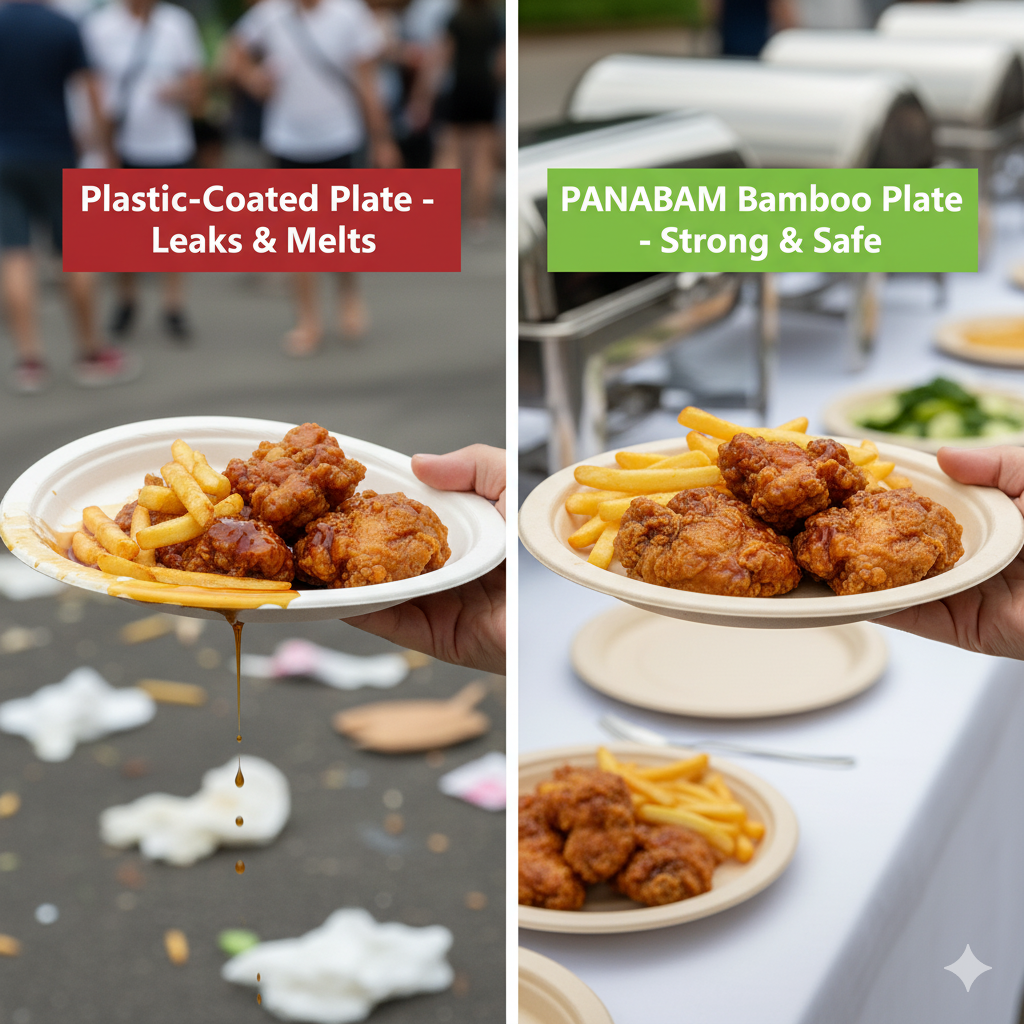
Before I found PANABAM, I tried multiple suppliers. Some plates smelled like plastic. Others melted under hot food. Many cracked or leaked during delivery. Worst of all, clients started asking for certifications I couldn’t provide.
Common Problems with Disposable Paper Plates
| Issue | How PANABAM Solves It |
|---|---|
| Plastic or Wax Coatings | Uses natural plant-based binders, not synthetics |
| Chemical Additives (BPA, PFAS) | 100% free from all toxic substances |
| Poor Durability | Reinforced fiber structure resists leaks and heat |
| Soft or Deforming Plate (Bagasse) | PANABAM plates stay firm under pressure |
| High Cost of Eco Plates | Automated production keeps costs competitive |
PANABAM’s innovation lies in its process. They run the first automated bamboo fiber tableware line in China. This allows for consistency, quality, and competitive pricing. With certifications like FDA and LFGB, I can now assure clients that safety isn’t just a claim—it’s proven.
Which Paper Plates Are Non-Toxic?
Many brands say they are non-toxic. But very few prove it.
Non-toxic paper plates must be free from all plastic linings, PFAS, BPA, bleach, or wax. Look for FDA-certified options.
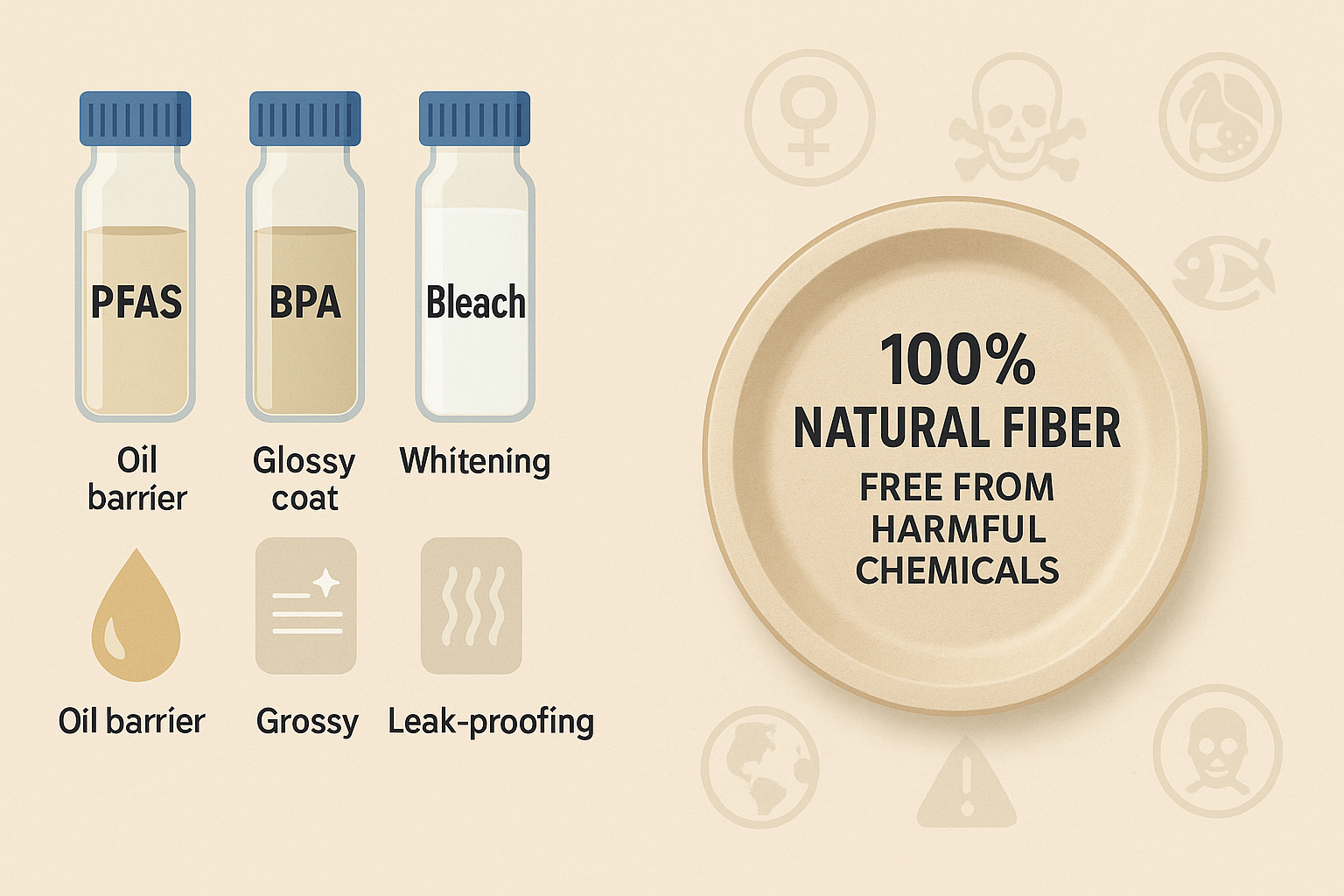
I had a client once ask why their plate smelled like glue when heated. It turned out the supplier used bleached pulp and hidden coatings. After that, I only sourced from certified manufacturers.
Signs of Truly Non-Toxic Paper Plates
- FDA or LFGB certification displayed clearly
- No odor when heated or exposed to moisture
- No shiny or waxy surface texture
- Natural, earthy look and feel
PANABAM’s bamboo fiber plates meet all of these requirements. More importantly, they feel safe to use—even with hot soups or oily takeout.
Are There Harmful Chemicals in Paper Plates?
Unfortunately, yes. Many plates contain toxic coatings.
Some paper plates contain PFAS, BPA, bleach, or fluorinated additives. Heating these can release harmful chemicals into food.
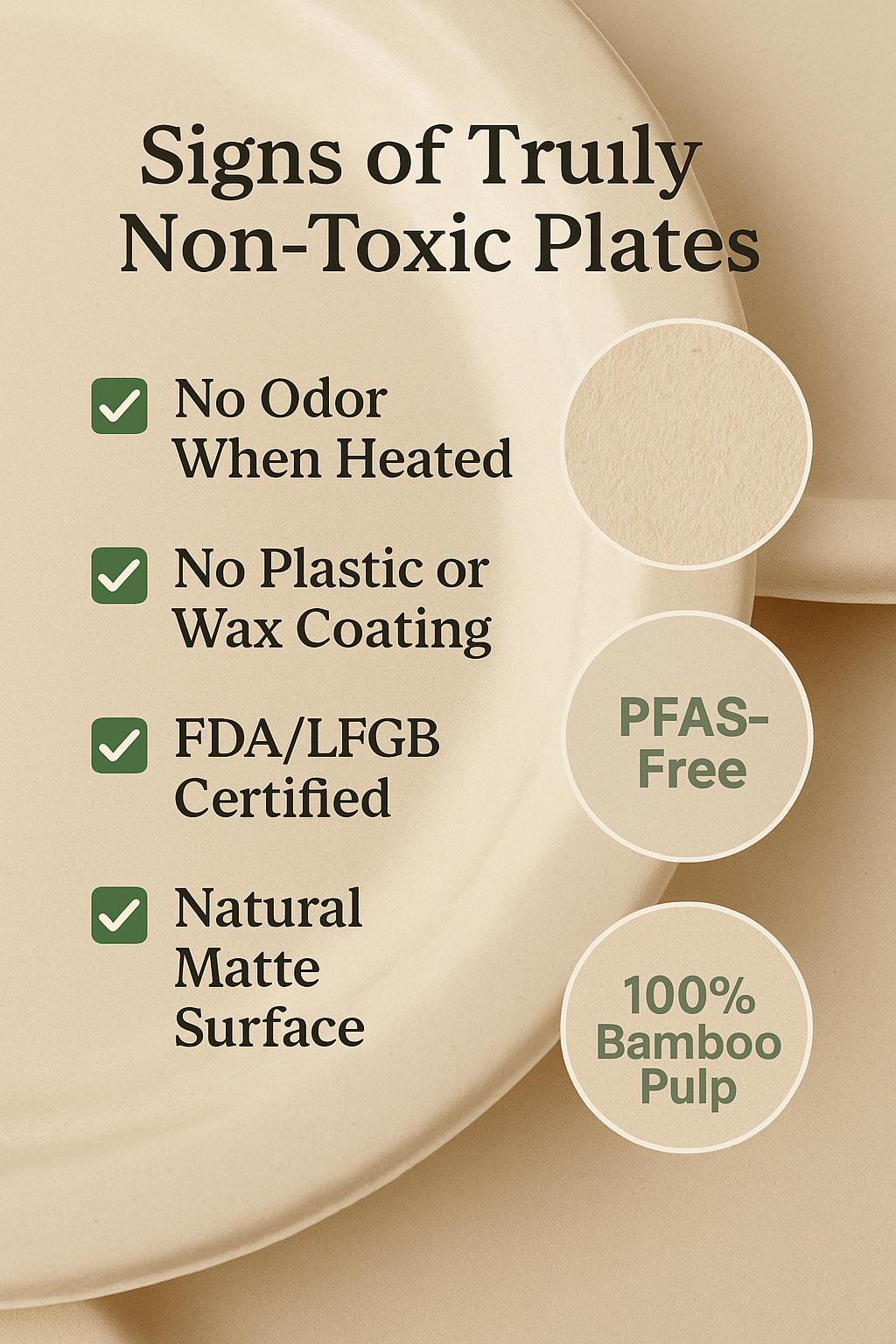
When I first looked into paper plate production, I was shocked by how common harmful additives were. Many manufacturers use bleach to whiten the pulp. Others use synthetic coatings to improve strength, but these coatings can break down into toxins.
Chemicals Commonly Found in Paper Plates
| Chemical | Purpose | Risk |
|---|---|---|
| PFAS | Grease resistance | Endocrine disruption, cancer |
| BPA | Plastic coating | Hormonal imbalance |
| Bleach | Whitening | Chemical residue in food |
| Wax | Leak-proofing | Low biodegradability |
This is why PANABAM avoids them entirely. Their bamboo fiber comes from untreated, pesticide-free bamboo. No bleach, no plastic, no wax—just natural strength.
What Is the Healthiest Dinnerware to Use?
There’s no one-size-fits-all answer. But some options are better.
Healthy dinnerware must be food-safe, chemical-free, durable, and sustainable. Bamboo fiber strikes the right balance.
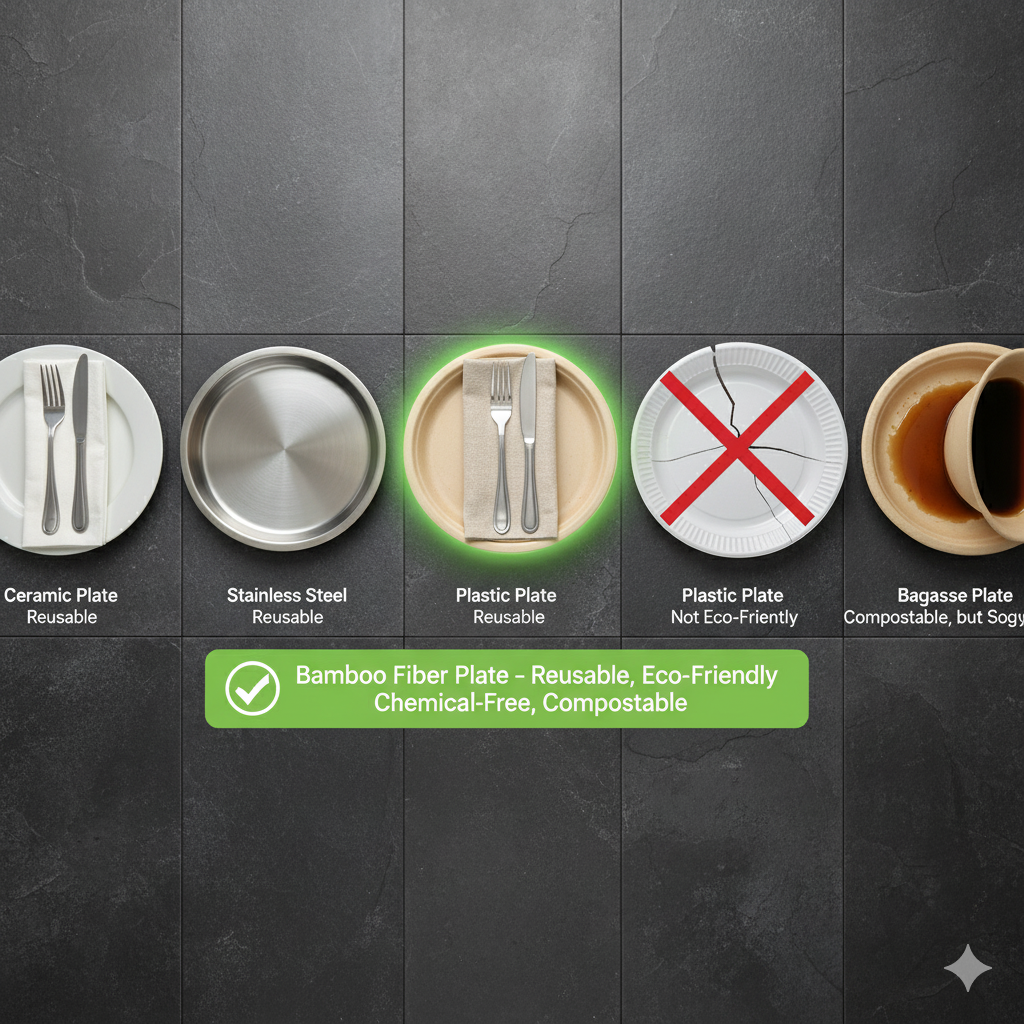
Reusable dinnerware like ceramic or stainless steel works well at home. But in B2B settings like catering or takeout, disposables are more practical. That’s where bamboo fiber shines.
Comparison of Dinnerware Options
| Material | Reusable? | Eco-Friendly | Chemical-Free | Durability |
|---|---|---|---|---|
| Ceramic | ✅ Yes | ✅ Yes | ✅ Yes | ✅ High |
| Stainless Steel | ✅ Yes | ✅ Yes | ✅ Yes | ✅ High |
| Plastic | ❌ No | ❌ No | ❌ No | ✅ Moderate |
| Bagasse | ❌ No | ✅ Partial | ❌ Often coated | ❌ Low to Medium |
| Bamboo Fiber | ❌ No | ✅ Yes | ✅ Yes | ✅ High |
I always recommend bamboo fiber for anyone needing disposable solutions without the risk of toxins or environmental damage.
What to Use Instead of Paper Plates?
If paper plates are problematic, what’s the alternative?
You can use bamboo fiber, bagasse, or palm leaf disposables. For reusable options, ceramic and stainless steel are best.
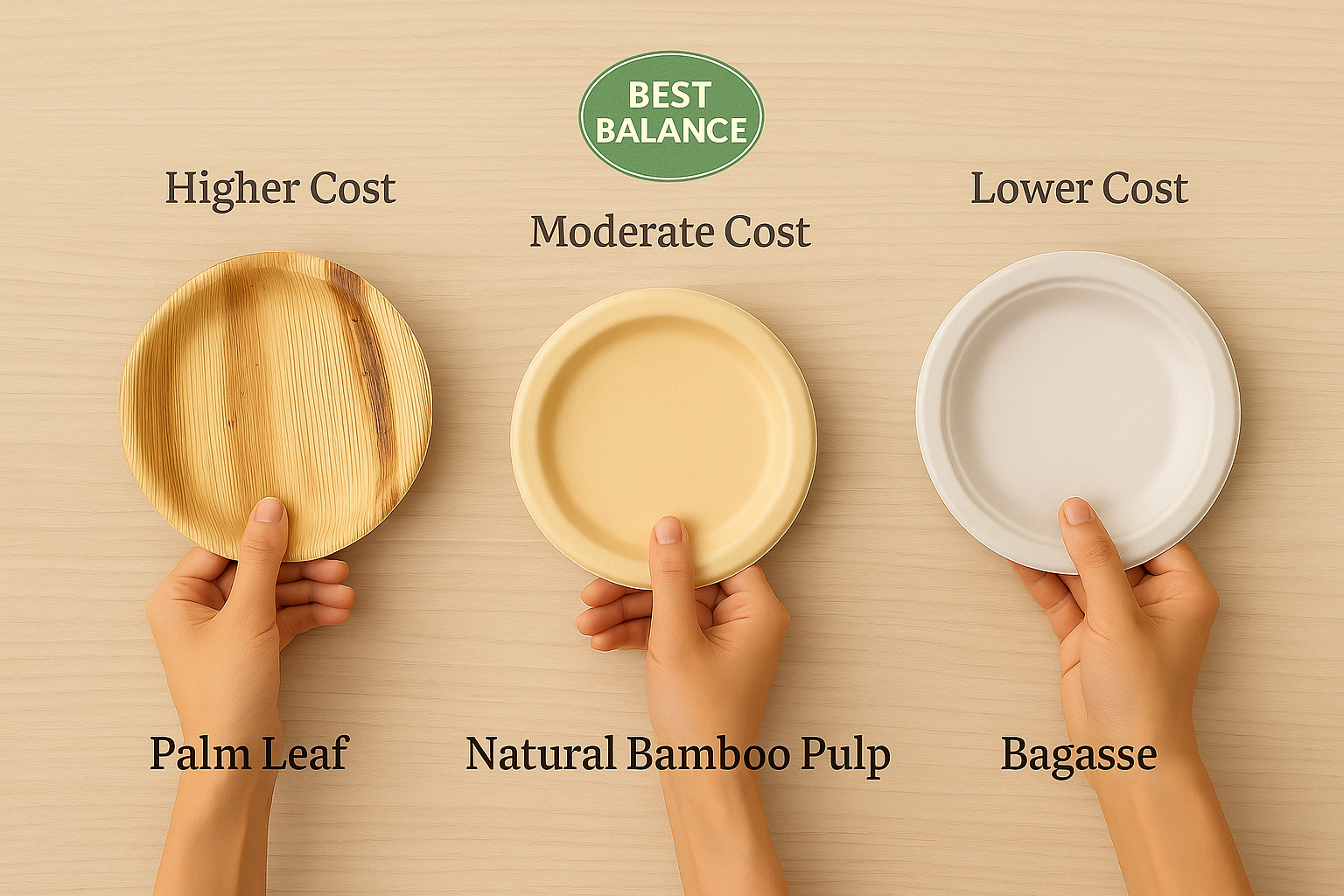
Some of my clients ask if they should just stop using disposables. But that’s not always practical. Events, food trucks, and takeout businesses still need convenient solutions. What matters is using the right kind.
Disposable Alternatives to Paper Plates
| Alternative | Pros | Cons |
|---|---|---|
| Bamboo Fiber | Safe, durable, compostable | Slightly higher unit cost |
| Palm Leaf | Natural look, sturdy | Limited shapes and sizes |
| Bagasse | Biodegradable, cheap | Often weak and coated |
Choosing the right option depends on your situation. For versatility and safety, I stick with bamboo fiber.
Should I Stop Using Paper Plates?
Not if you choose the right kind.
You can keep using paper plates as long as they meet safety and environmental standards. PANABAM plates are a good example.

I used to think the only green option was reusable plates. Then I realized certified disposables like PANABAM’s bamboo fiber line meet strict environmental laws while staying practical for business.
Many countries now enforce plastic bans. That’s why switching to sustainable disposables is more than a personal choice—it’s smart business.
Why Choose PANABAM Bamboo Fiber Paper Plates?
You need a supplier who meets every need. PANABAM does.
PANABAM offers safe, strong, and certified bamboo fiber plates with low pricing and high output.

I’ve worked with many suppliers. PANABAM stood out. Their production capacity is unmatched. Their product quality stays consistent. And their customer support makes every order smooth.
PANABAM Advantages
| Feature | PANABAM |
|---|---|
| Certifications | ✅ FDA, LFGB |
| Production Capacity | ✅ Automated, 5+ lines |
| Customization Options | ✅ Yes |
| Pricing | ✅ Competitive with plastic |
| Sustainability | ✅ 100% bamboo, no coatings |
I trust PANABAM for all my disposable tableware needs. Their bamboo fiber plates help me serve customers better while staying compliant and eco-conscious.
Conclusion
Bamboo fiber plates are the healthiest, safest, and most eco-friendly disposable option available today.
FAQ
1. Which Paper Plates Are Non-Toxic?
Non-toxic paper plates exclude plastic coatings, BPA, PFAS, bleach, and wax. PANABAM bamboo fiber plates are certified, safe for food contact without odor or taste transfer.
2. Are There Harmful Chemicals in Paper Plates?
Plastic linings, fluorine coatings, bleaches, and additives in many paper plates can leach harmful substances. Certified bamboo fiber plates avoid these risks completely.
3. What Is the Healthiest Dinnerware to Use?
The healthiest dinnerware is durable, food-safe, and eco-friendly. PANABAM bamboo fiber tableware offers natural antibacterial properties, heat resistance, and full biodegradability.
4. What to Use Instead of Paper Plates?
Sustainable alternatives include bamboo fiber, bagasse, and palm leaf disposables, or reusable ceramic and metal options for longer-term use.
5. Should I Stop Using Paper Plates?
Switching entirely isn’t necessary if using environmentally certified, non-toxic plates like bamboo fiber options that meet regulatory and sustainability demands.

Ann
Hi, I’m Ann, and with over 5 years of experience in the foodservice industry, I’ve had the pleasure of working with restaurants and catering businesses to develop eco-friendly, tailored solutions that help you thrive in today’s green economy. I’m passionate about sustainability and committed to providing high-quality products that align with your values.
If you’re looking to make the switch to eco-friendly, sustainable tableware, I’m here to help! Reach out today, and let’s explore how we can support your business’s goals while contributing to a healthier planet.

